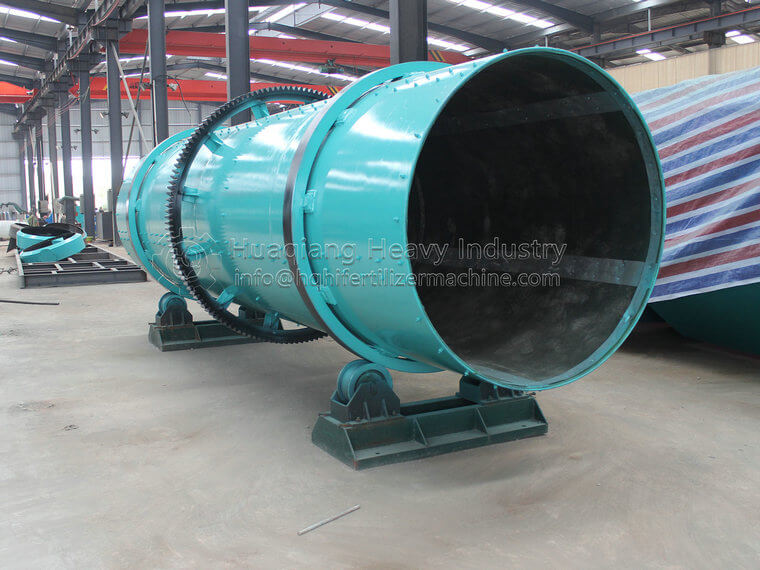The workflow of a rotary drum granulator is a continuous process, mainly involving several key steps such as raw material preparation, granulation, particle screening, and post-treatment. The following is a typical workflow of a rotary drum granulator:
Raw material preparation:
The raw materials (such as the components of NPK fertilizers) are first crushed to an appropriate particle size to ensure uniform dispersion during the granulation process. Subsequently, the raw materials are mixed to achieve the desired chemical composition ratio. The mixed raw materials are fed into the cylindrical granulation chamber of the rotary drum granulator through the feeding port.
Granulation process:
Entering the granulation chamber: The raw materials enter the granulation chamber, which is usually a tilted cylinder with specific structural designs inside, such as blades or elevators, to promote the rolling and mixing of the raw materials.
Water spray/binder addition: spray an appropriate amount of water or binder evenly to raw materials through the spray system in the granulation room. The amount of water or binder added needs to be precisely controlled to ensure the granulation effect and particle quality.
Rolling and Agglomeration: As the cylinder rotates, the raw materials roll inside, and small particles aggregate into larger particles through bonding. The inclination and rotation speed of the cylinder can be adjusted to control the size and shape of the particles.
Particle screening:
Discharge and screening: After granulation is completed, the particles are discharged from the discharge port of the granulation chamber. These particles will pass through a screening device, usually a rotating screen or vibrating screen, to remove particles that are too small or too large, ensuring uniform particle size in the final product.
Post processing:
Drying: The screened particles may need to enter a dryer to remove excess moisture added during the granulation process, ensuring the stability and storage performance of the particles.
Cooling: Dried particles may need to be cooled to reduce temperature and prevent possible clumping or deterioration during subsequent processing.
Packaging: The cooled particles can undergo final packaging for sale or storage.
The workflow of the rotary drum granulator is a highly integrated and automated continuous production process, and the design of each link and the adjustment of operating parameters have a significant impact on the quality and production efficiency of the final product. By precisely controlling the mixing of raw materials, the amount of moisture/binder added, the rotation speed and tilt angle of the cylinder, etc., granular products that meet specific needs can be produced.